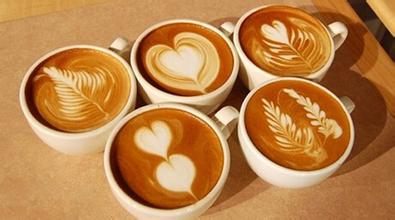6 Things About Coffee
Coffee has changed from the strange taste of foreign things more than a decade ago to a cup of leisure drink in the hands of fashionable white-collar workers today. And there are not a few people who are addicted to coffee and are willing to spend a lot of time in a long line at Starbucks, but dare you say you really know anything about coffee? Or do those cups of drinks that look like petty bourgeoisie make you feel superior? Self-willed, through the following six strides to the coffee shop!
1. Shallow baking (Light Roast) vs deep baking (Dark Roast)
According to the American classification, the roasting of coffee beans can be divided into eight stages from shallow to deep. The taste of coffee mainly depends on the baking degree. Generally, the deeper the roasting degree, the stronger the bitter taste, and the lower the roasting degree, the higher the sour taste. Baking depth mainly depends on the characteristics of raw beans, personal preferences and other factors.
Arabica (Arabica) vs Robusta (Robusta)
In terms of varieties, coffee trees are mainly divided into two kinds: one is Arabica, the other is Robusta. Arabica coffee is mainly produced in tropical South America, such as Central Brazil, with smaller bean shape, lower caffeine content and higher price.
Robusta is produced in Madagascar in west-central and eastern Africa, as well as Indonesia in Asia, with large beans, about twice as much caffeine as Arabica, and low prices.
About 75% of the world's coffee is Arabica, but only 10% is coffee that can be used in upscale coffee shops.
Espresso (Espresso) vs dripping Coffee (Drip)
Espresso is made by letting hot water flow through a handful of fine coffee powder under high pressure, with high caffeine concentration and coffee fat. The dripping coffee is to let the boiling water through the coarse ground coffee powder, the caffeine concentration is low, basically does not contain coffee fat, is more suitable for drinking in large quantities.
Caffee Latte (vs) cappuccino (Cappuccino)
Lattes and cappuccinos both belong to milk coffee. The main difference lies in the ratio of espresso, milk and milk bubbles.
For cappuccino, the amount of espresso, hot milk and foam should be the same (1:1:1), while hot latte milk is more (1:2:1). The latte is more compact and delicate, while the cappuccino is slightly dry.
5. Caffee Latte vs Ole Coffee (Cafe au Lait)
Simply put, lattes are made from Espresso and steamed milk, while Ole coffee is made from dripping coffee with steamed milk.
Espresso or Expresso
If the above 5 points are not clear for the time being, remember to pronounce them correctly first! Espresso is Italian, especially espresso. It means on the spur of the moment and "for you" (cooked right away for you). In a coffee shop, if you ask for "Espresso", it means you are in a hurry, while Expresso can only make the clerk laugh.

Important Notice :
前街咖啡 FrontStreet Coffee has moved to new addredd:
FrontStreet Coffee Address: 315,Donghua East Road,GuangZhou
Tel:020 38364473
- Prev

improve| Creative coffee making concept
From bean selection, roasting, mixing, grinding, extraction, every step becomes the key to affecting the taste of coffee. In the production process, focus, calm, careful, coherent, methodical. A good cup of coffee is more about the barista's understanding of coffee, including the growing environment, planting conditions, picking and processing methods of coffee, etc., which will affect the taste of coffee.
- Next

Why does boutique coffee become more and more addictive?
1. All the fine coffee is Arabica, and the cup score is more than 80 points. 2. There is no difference between washed beans and sun-dried beans, but there will be a difference in aroma and flavor. 3. Washed beans: the aroma is floral / fragrant, the flavor is fresh and sour, and the acidity is bright; sun beans: generally fermented wine / fruit / raspberry flavor, the flavor is more mellow. 4 、
Related
- Beginners will see the "Coffee pull flower" guide!
- What is the difference between ice blog purified milk and ordinary milk coffee?
- Why is the Philippines the largest producer of crops in Liberia?
- For coffee extraction, should the fine powder be retained?
- How does extracted espresso fill pressed powder? How much strength does it take to press the powder?
- How to make jasmine cold extract coffee? Is the jasmine + latte good?
- Will this little toy really make the coffee taste better? How does Lily Drip affect coffee extraction?
- Will the action of slapping the filter cup also affect coffee extraction?
- What's the difference between powder-to-water ratio and powder-to-liquid ratio?
- What is the Ethiopian local species? What does it have to do with Heirloom native species?

